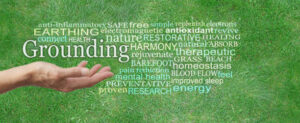Happiness in 2024: A Journey to Inner Fulfillment Beyond Materialism
Happiness in 2024, A Journey to Inner Fulfillment Beyond Materialism, Dispelling the Illusion of Material Happiness, Embracing the Power of Patience and Gratitude
In a world fixated on material gain and external validation, the quest for happiness often leads us astray. This article seeks to unravel the true essence of happiness, shedding light on the importance of inner peace, contentment, and spiritual fulfillment.
1. Dispelling the Illusion of Material Happiness

“Dispelling the Illusion of Material Happiness” aims to challenge the common misconception that material possessions are the primary source of happiness. The section emphasizes that this belief is misleading and explores the deceptive nature of associating happiness solely with external, tangible things. It argues that genuine happiness is not contingent upon the accumulation of more material wealth or possessions.
The key points
- Misconception of Material Possessions: The idea is to highlight that society often promotes the notion that owning more, having the latest gadgets, or indulging in luxurious experiences leads to happiness. This is presented as a widespread misconception.

Dispelling the Illusion of Material Happiness”
- Deceptive Nature: The section emphasizes that considering material possessions as the primary source of happiness is deceptive. It suggests that the media and societal influences create an illusion that acquiring more things will result in lasting fulfillment.
-

True Happiness Resides Within True Happiness Resides Within The central theme is to redirect the focus inward. It suggests that true happiness comes from within oneself rather than relying on external circumstances or possessions. This concept challenges the external-driven narrative that is often perpetuated.
- Understanding the Depths of Our Being: The pursuit of lasting fulfillment is then redefined. Instead of chasing after external acquisitions, the section encourages readers to delve into self-discovery, emphasizing that understanding one’s values, passions, and intrinsic motivations is the path to genuine and enduring happiness.

2. Embracing the Power of Patience and Gratitude
Patience and gratitude, often overlooked in the pursuit of happiness, emerge as pillars of inner peace. This section delves into the transformative qualities of these virtues, showcasing their ability to navigate life’s challenges and amplify our appreciation for existing blessings.
“Embracing the Power of Patience and Gratitude” encourages individuals to recognize and appreciate the transformative qualities of two essential virtues: patience and gratitude.
Key ideas:
- Overlooked Virtues: The section suggests that in the pursuit of happiness, people often overlook or underestimate the importance of patience and gratitude. These virtues are presented as powerful tools that can significantly contribute to one’s overall well-being.

The quote by Albert Einstein - Foundational Elements of Inner Peace: Patience and gratitude are portrayed as foundational elements that contribute to the cultivation of inner peace. By acknowledging their power, individuals can navigate life’s challenges more gracefully and find contentment in the present moment.
- Patience Defined: The section delves into the concept of patience, particularly in a world that often values instant gratification. It suggests that patience is not a passive acceptance of circumstances but an active choice to embrace the present moment, allowing for resilience in the face of life’s difficulties.
- Gratitude Defined: Gratitude, described as the practice of acknowledging and appreciating the positive aspects of life, is introduced as a potent antidote to dissatisfaction. It shifts the focus from what one lacks to the abundance that already exists, fostering contentment.

Hugging & Cuddling - Synergy of Patience and Gratitude: The section highlights the synergistic relationship between patience and gratitude. Together, these virtues work harmoniously to build resilience, contentment, and joy. Patience provides the framework for navigating challenges, while gratitude helps individuals appreciate and find joy in the simple blessings of life.
- Daily Practices: Practical suggestions for integrating patience and gratitude into daily life are likely explored. This could include mindfulness exercises, expressing gratitude for small joys, and consciously choosing patience in moments of frustration or difficulty.
- Shift in Perspective: By embracing patience and gratitude, individuals can experience a shift in perspective. The focus moves from a hurried and discontented mindset to one marked by acceptance, appreciation for what is, and the cultivation of inner peace.
In summary, “Embracing the Power of Patience and Gratitude” advocates for the recognition and intentional incorporation of patience and gratitude into one’s life. These virtues are presented as transformative forces that contribute to a more resilient, content, and joy-filled existence.
3. The Art of Gratitude: Nurturing Contentment
Gratitude, the practice of acknowledging life’s goodness, stands as a powerful antidote to discontent. This section highlights how gratitude shifts our focus from scarcity to abundance, allowing us to find joy and contentment in life’s simple pleasures.

Key ideas:
- Defining Gratitude: The section likely begins by defining gratitude as the art of acknowledging and appreciating the positive aspects of life. It sets the stage for understanding gratitude not merely as a polite response but as a conscious and intentional practice.
- Powerful Antidote: Gratitude is presented as a powerful antidote to discontent and dissatisfaction. It is positioned as a mental and emotional shift that can counteract the negative effects of constantly seeking more and feeling unfulfilled.
- Shifting Focus: The core idea is that gratitude facilitates a shift in focus from what one lacks to the abundance that already exists. By consciously recognizing and appreciating the good things in life, individuals can develop a more positive and content perspective.
- Simple Joys: The section may highlight how cultivating gratitude makes individuals more aware of the simple joys in life. This could include appreciating a warm cup of coffee, the laughter of loved ones, or the beauty of nature. These once-overlooked blessings become sources of immense joy and contentment.

Simple Joys - Mindfulness and Presence: Gratitude is often linked to mindfulness and being present in the moment. By cultivating gratitude, individuals are encouraged to be fully aware of their surroundings and experiences, fostering a deeper connection to the present.
- Daily Practice: The section might suggest practical ways to incorporate gratitude into daily life. This could involve keeping a gratitude journal, expressing appreciation to others, or taking a moment each day to reflect on the positive aspects of life.
- Nurturing Contentment: The overarching theme is that gratitude plays a pivotal role in nurturing contentment. As individuals become more attuned to the positive aspects of their lives, they are more likely to experience a sense of fulfillment and satisfaction.
- Contrast with Material Pursuits: Gratitude may be contrasted with the pursuit of material possessions and external achievements. While the latter often leads to a cycle of dissatisfaction, the practice of gratitude is presented as a sustainable and fulfilling way to find contentment.
In summary, “The Art of Gratitude: Nurturing Contentment” emphasizes gratitude as a conscious practice that shifts one’s focus from lack to abundance. By nurturing a sense of appreciation for the positive aspects of life, individuals can experience increased contentment and a more fulfilling existence.
4. The Harmony of Patience and Gratitude
The harmony of patience and gratitude is a state of being characterized by the ability to navigate life’s challenges with composure, resilience, and a deep appreciation for the blessings that surround us. It is a state of inner peace and contentment that arises from the understanding that true happiness lies not in external pursuits but in the cultivation of inner qualities.
Patience
Patience is the ability to endure difficult or unpleasant situations without losing composure or becoming overwhelmed. It is the capacity to accept the unfolding of events without resistance, recognizing that everything has its unique rhythm and that some things simply take time. Patience allows us to approach setbacks with resilience, view challenges as opportunities for growth, and find solace in the knowledge that every situation has its unique lessons to teach us.
Gratitude
Gratitude is the art of acknowledging and appreciating the good in our lives, no matter how small or insignificant it may seem. It is the ability to shift our focus from what we lack to what we already possess, cultivating a sense of abundance and contentment. When we cultivate gratitude, we become more aware of the simple joys in life – a warm cup of coffee, the laughter of loved ones, and the beauty of nature. These small blessings, once overlooked, become sources of immense joy and appreciation.
The Synergy of Patience and Gratitude
Patience and gratitude are not merely isolated virtues; they work in tandem to foster inner peace and well-being. Patience provides the framework for acceptance and perseverance, while gratitude nurtures a sense of contentment and appreciation. Together, they enable us to navigate life’s challenges with resilience, find joy in the present moment, and cultivate a deep sense of inner harmony.
The Transformative Power of Patience and Gratitude
When we embrace patience and gratitude, we embark on a journey of self-transformation. We learn to let go of our need for instant gratification and control, embracing the uncertainty of life with open arms. We develop a deeper appreciation for the simple joys that surround us, finding beauty and meaning in the everyday moments. And most importantly, we cultivate an inner peace that is unshaken by external circumstances, a state of being that allows us to truly experience the harmony of life.
Ways to Cultivate Patience and Gratitude in Your Daily Life
- Practice mindfulness: Take time each day to be present at the moment, to appreciate the sights, sounds, and sensations around you.
- Keep a gratitude journal: Write down three things you are grateful for each day, no matter how small.
- Express appreciation to others: Let the people in your life know how much you appreciate them.
- Learn to forgive yourself and others: Holding onto grudges only creates resentment and unhappiness.
- Practice patience in the face of challenges: Remind yourself that everything has its unique rhythm and that some things simply take time.
By incorporating these practices into your daily life, you will begin to cultivate the harmony of patience and gratitude, a state of being that will enrich your life in countless ways.
If you enjoyed this article, please like and share it with your friends, and don’t forget to subscribe for more great content!
Sources:
: Joy VS Happiness: 11 Important Differences Between Each 2: Happiness vs Joy – Difference and Comparison | Diffen 3: 10 Main Differences between Joy and Happiness – PsychologyBank 4: The Difference Between Joy and Happiness – Compassion International

